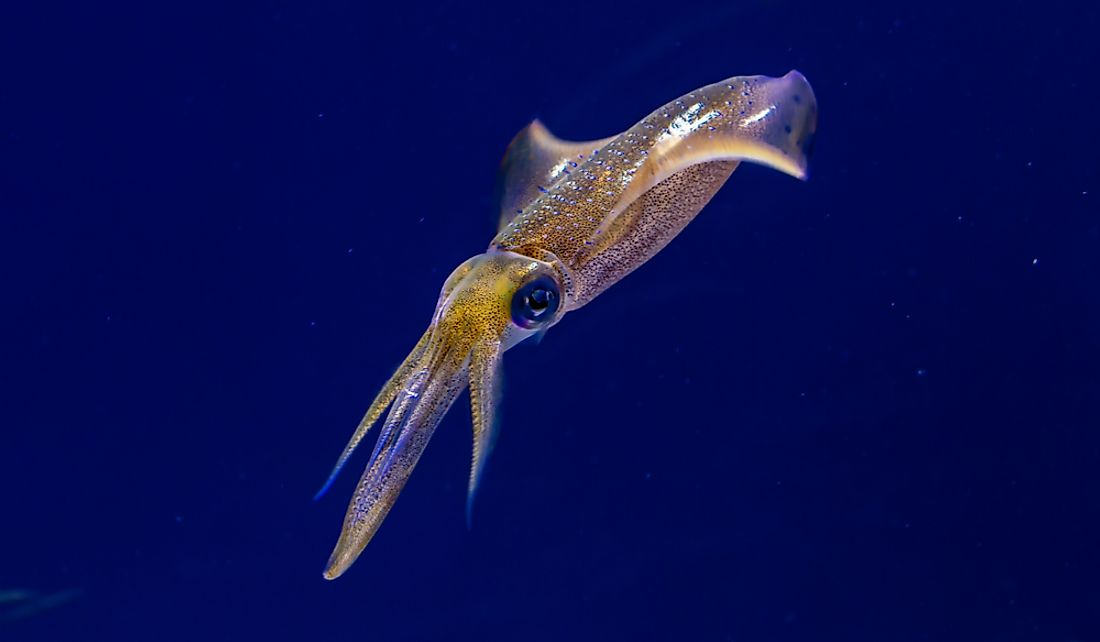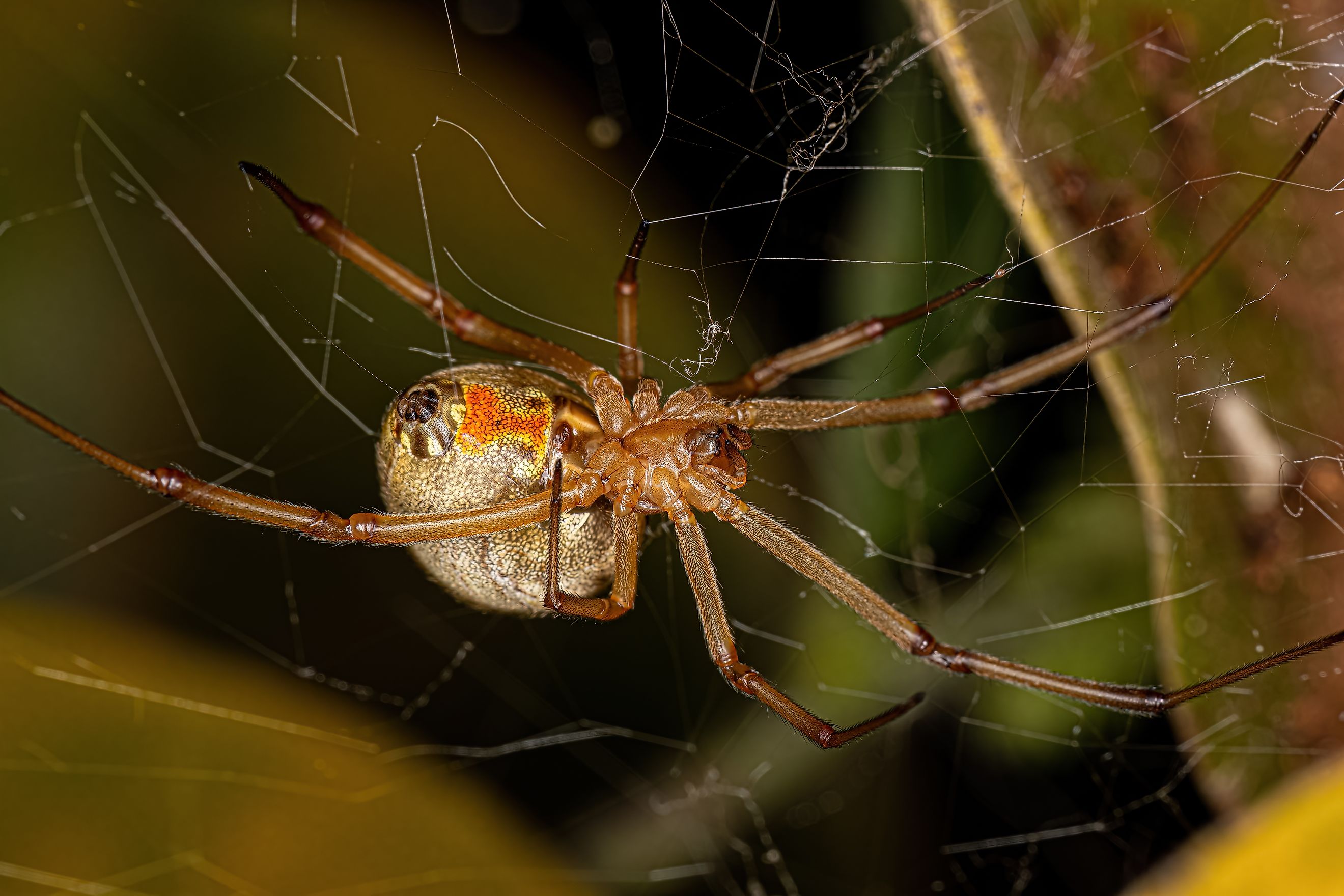
4 Most Venomous Spiders in Alabama
Spiders typically get a bad reputation, but the truth is that spiders are an essential part of the ecosystem and help control pest populations. With about 34,000 known species worldwide, only a handful pose any threat to humans. Alabama is home to hundreds of species of spiders, but only four can be harmful.
Alabama’s diverse landscapes, ranging from lush forests to wetlands, create the perfect habitat for various spider species. The most notable are the southern black widow and the brown recluse, both known for their distinctive appearances. Additionally, the brown widow spider and the Northern black widow can also be found throughout the state, contributing to Alabama's intriguing arachnid population. Understanding these spiders and their habitats is essential for anyone exploring the natural beauty of Alabama.
Southern Black Widow Spider (Lactrodectus Mactans)
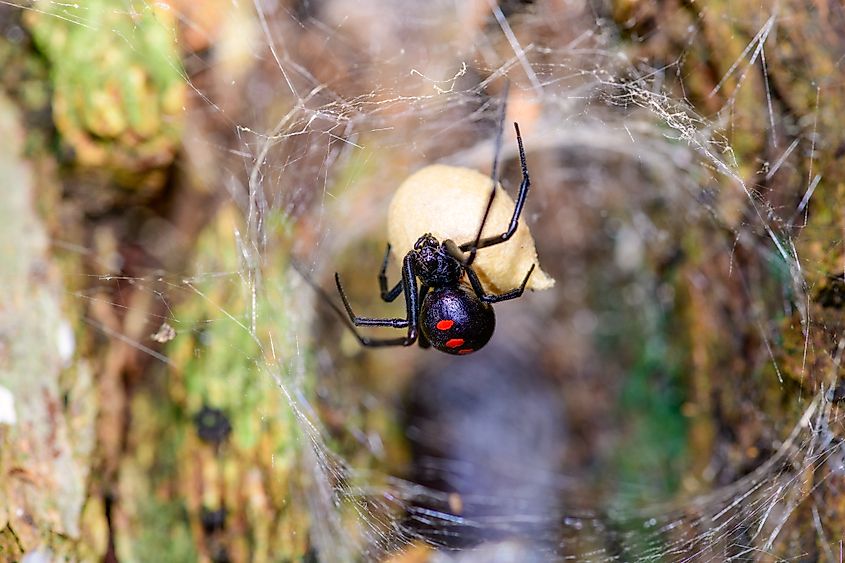
Latrodectus mactans is known as the southern black widow and is a venomous spider species. The females are easily recognizable by their spiny black coloring with a red hourglass-shaped marking on the underside of their very round abdomen. The body of a southern black widow is 8 to 13 mm long, excluding its legs. Remarkably, the abdomen of an egg-carrying female widow can be more than 1.25 cm (or one-half inch) in diameter.
The species is native to North America. They spin tangled three-dimensional webs of very strong silk, often under logs, rocks, and woodpiles, which provides protection for their webs. They are usually found outdoors in warm weather, though cold weather may drive them inside barns, cellars, garages, and crawl spaces. Southern black widows prey on various insects, but they also consume other arachnids and even their young.
The Southern black widow has a notorious reputation, including killing her partner after mating. In humans, while their venom can cause pain and other symptoms, it is rarely fatal. Swelling, redness, and a bulls-eye target may appear. If the bite is on the upper body, the pain will be in the chest; if the bite is on the lower body, the pain will be around the abdomen.
Brown Recluse Spider (Loxosceles Reclusa)
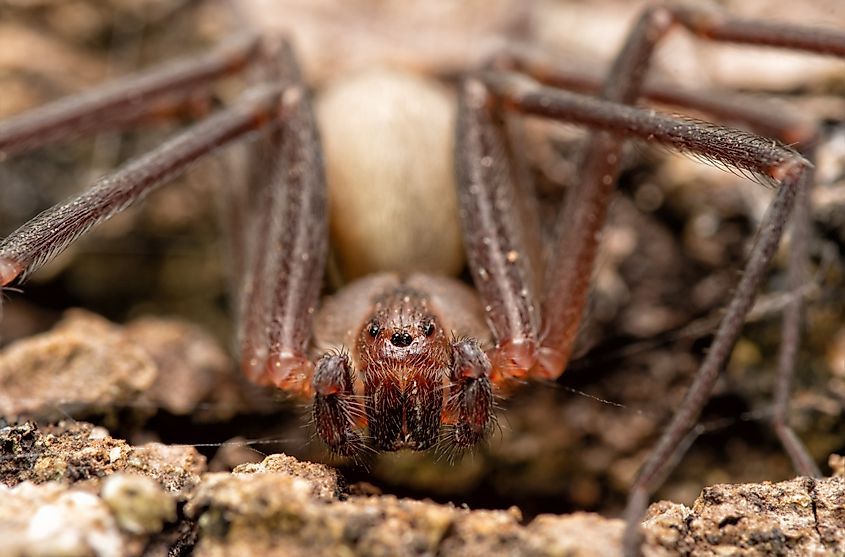
Front closeup of a Brown Recluse spider.
Loxosceles reclusa are typically between 6 and 20 mm long but may grow larger. They are usually brown in color, hence their name, but can range from white to dark brown to gray. They are often referred to as violin or fiddleback spiders due to the distinctive violin-shaped markings on their cephalothorax (fused head and thorax) that point to the spider’s bulb-shaped abdomen. What truly distinguishes the recluse from other arachnids is its eyes—it has six eyes. Most spiders have eight eyes, but the recluse has only six arranged in pairs or dyads.
In Alabama, brown recluse spiders are more common in the state's northern half and prefer dry areas such as log piles, rocks, and caves. They are often carried into homes in boxes or furniture and have adapted well to living inside basements or under stairs. Brown recluses hide in coats, clothes, shoes, bedding, or linens.
Most bites from a brown recluse are not medically significant and often don’t hurt immediately. Symptoms include red skin followed by a blister, pain, and itching at the site, but some bites can lead to severe reactions in children or older adults, like fever, chills, and a skin rash. The best preventive measure for being bitten by a brown recluse spider is to avoid putting fingers and toes in places where you can’t see them and inspect clothes for spiders before wearing them.
Brown Widow (Latrodectus Geometricus)
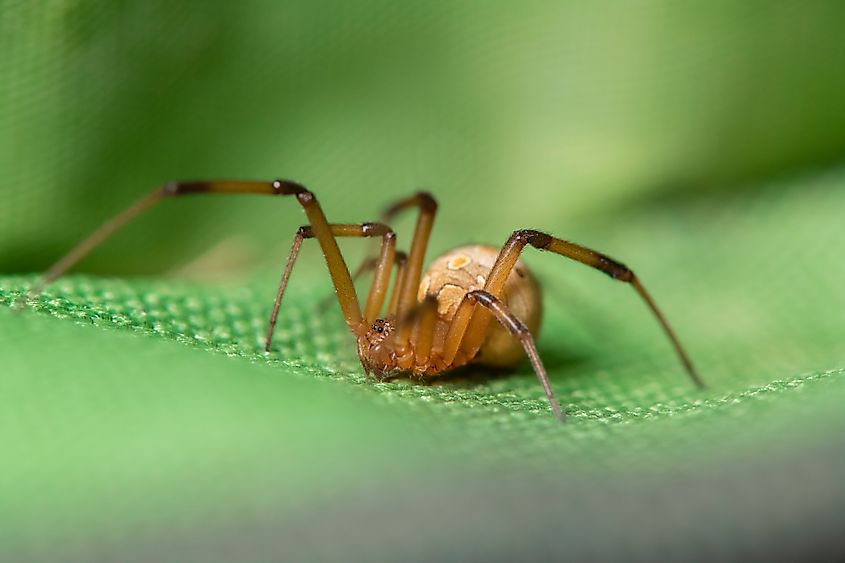
Unlike its black-and-red colored relative, Latrodectus geometricus is a mixture of tan and brown. The female of the species has black accent stripes. It does possess the telltale hourglass, but it is typically an orange shade rather than the vivid red of a black widow.
Brown widows thrive in habitats under eaves of buildings, ledges of brick walls, under picnic tables, and among debris in hollow trees and under loose bark. They tend to be found in more open areas than black widows, often in well-lighted areas. The brown widow builds its web in secluded sites around homes, like buckets, plant pots, mailboxes, garages, and in the hand grips of plastic garbage cans.
Unlike the Southern black widow, bites by brown widows tend to be more common because they live in more exposed areas. The bite of a brown widow is minor compared to that of a Southern black widow, primarily because it is smaller. The main symptoms are similar to a regular spider bite, with pain at the bite site and a red mark.
Northern Black Widow Spider (Lactrodectus Variolus)
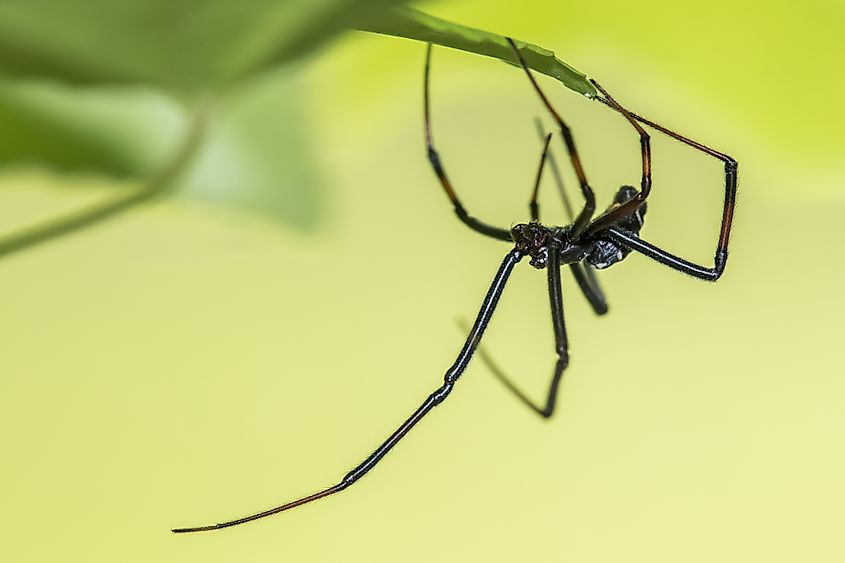
Northern Black Widow, male.
Northern black widow spiders are easy to identify and share many characteristics with their southern cousins. They have a distinctive hourglass shape on their dime-sized abdomen, but the hourglass appears broken in the center. Depending on the spider's age, they may also have reddish-orange lines along the top of the abdomen.
Alabama’s warm climate, with mild winters, is ideal for the northern black widow, allowing it to remain active longer. Lactrodectus variolus forms tangled, messy webs in woodlands, stone and wood piles, and undisturbed corners of sheds, garages, and other shelters outside. This spider species typically lives around woodpiles and often enters homes when firewood is carried into a building.
Northern black widows tend to be timid and, if disturbed, will flee and not defend their habitat. Although black widow spiders possess highly potent venom, they rarely bite but instinctively react when crushed against the skin. If bitten, symptoms include pain at the bite site, abdominal cramping, sweating, nausea, and vomiting. Fatal bites are very rare.
Alabama has hundreds of spider species, but only four are considered venomous: southern black widow, northern black widow, brown widow, and the brown recluse. The southern and northern black widows are known for their potent venom and distinctive hourglass markings, while the recluse have a violin-shaped pattern on their backs and six eyes. Despite the presence of venomous species, spider bites in Alabama are rare, and basic precautions can help prevent incidents.





